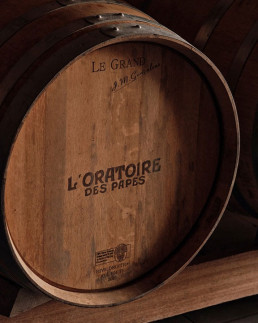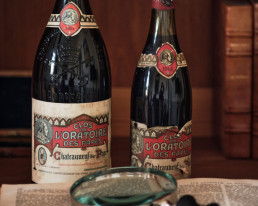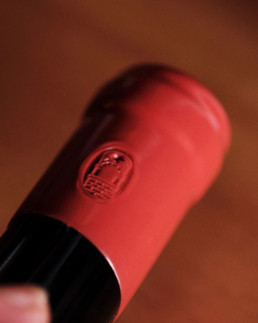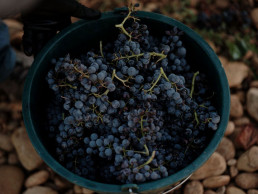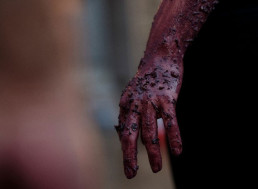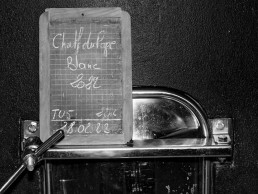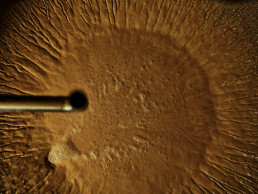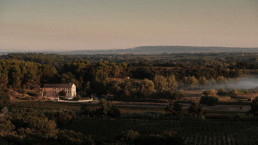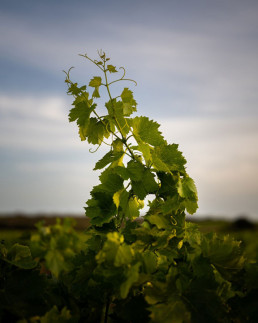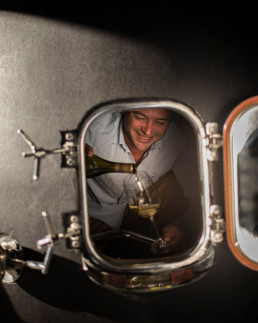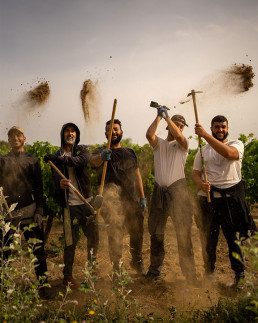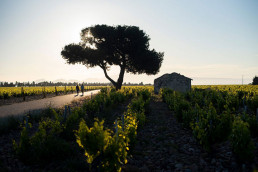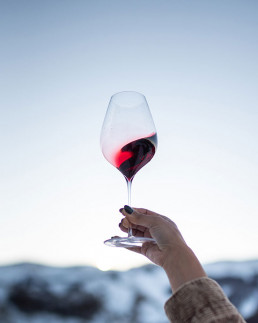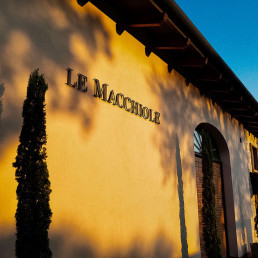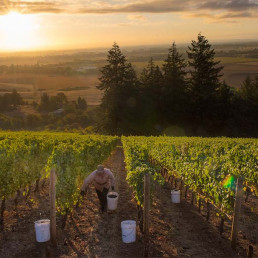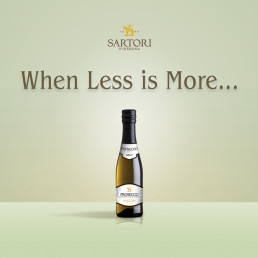L’Oratoire des Papes Châteauneuf-du-Pape
The Best CDP Benchmarks Never Go Out of Style
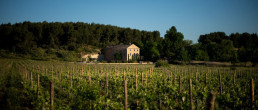
“While all our wines have a soul, our Châteauneuf-du-Pape is the most intimate expression of these southern Rhône Valley terroirs. “
(Ogier Website)
In the famed vineyards of Châteauneuf-du-Pape, it doesn’t get more “benchmark” than Maison Ogier’s L’Oratoire des Papes. When it comes to capturing the very soul of this highly prized Rhône terroir, no one showcases opulence juxtaposed to elegance, with deeply concentrated, beefy bottlings better than Ogier’s new look L’ORATOIRE des PAPES. They are the undisputed royalty of the Rhône’s southern cru.
When we are asked, what makes for the ultimate cellar worthy bottle of CDP? You need three things: great vineyard parcels, an impeccable producer, and a stellar vintage. Ogier’s L’Oratoire des Papes has all three in spades with these new arrivals on NZ’s shores.
D&N has a precious allocation of merely 29 bottles of 2021 L’Oratoire des Papes CDP Rouge and only 12 bottles of 2022 L’Oratoire des Papes CDP Blanc. Sacre Bleu! Stock up!
Obviously, there’s plenty of jockeying for access when new vintages of this calibre are released. But let’s be clear about who’s in the L’Oratoire CDP cult: wine professionals, collectors and serious aficionados with a sense of history and an appreciation for balance, ageability, and consistent quality-for-your-dollar.
Superlatives are exhausted every time we taste one. If you don’t have some of these iconic wines in your cellar already, you are missing out! These are very limited, so don’t wait to pounce. Tout de suite!
“Our desire is to build on our unique heritage whilst also generating new impetus for the future”.
(Ogier Website)
The Signature
An Iconic Bottle Label
This ‘handmade’ label was designed during the Art Deco art movement and has become a timeless and classic work in its own right. It was in 1926 that the son of the original owner, Léonce Amouroux filed a notarial act to formalize the trademark registration of their signature label design.
The label features strong symbols such as the vault depicted here to symbolize the papal crown worn by the popes in the 14th century. On the lefthand side of the label is an image of the oratory dedicated to Saint Mark which is still present in the vineyards surrounding the Priory. At the top of the label is another historical religious emblem in the form of the medal of Pope Benedictus XIII.
Almost 150 years after it was founded, a new chapter is being written in the history of Clos de L’Oratoire des Papes. Still staying true to and embracing their heritage their new look label is simplified with L’Oratoire des Papes written only. Nevertheless, it remains an affirmation of their historic identity and their individuality – L’Oratoire des Papes is one of the most iconic CDP appellation brands and the label continues to be instantly recognisable throughout the world.
2021 L’Oratoire des Papes Rouge
Ideal in combination with rich and tasty dishes, such as roast or braised red meats, game, spicy stews and mature cheeses, l’Oratoire des Papes Rouge could be called a “meditation” wine, to be appreciated for its ability to evolve and reveal new nuances during a tasting.
L’Oratoire des Papes Rouge is a wine that represents the quintessence of the Châteauneuf-du-Pape appellation, long renowned for its powerful and dramatic wines.
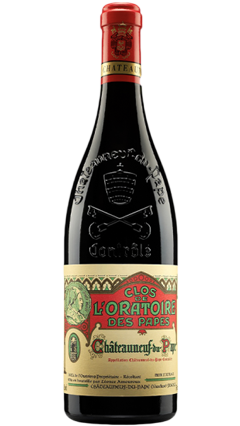
The 2021 cuvée Rouge is a blend of traditional Châteauneuf-du-Pape varieties, with Grenache dominating the composition, flanked by Syrah with lesser amounts of Mourvèdre and Cinsault as permitted by the appellation. This combination of grapes contributes to a complex flavour profile and a well-balanced tannic structure, reflecting the estate’s ability to combine tradition and winemaking precision.
“It all begins with the soils, their complexities, and carefully nurtured grapes […] What we need in order to produce living, breathing wines is living, breathing soils and a carefully nurtured and well-nourished vine.”
Edouard Guerin, Oenologist
Vinification Notes – The quintessence of the appellation’s 4 terroirs in a Grenache based blend. This wine is made from grapes grown in the famous rounded stones terroir, red clays, limestone fragments and sandy soils and is vinified with the utmost respect for winemaking traditions.
The use of co-fermentation during the vinification process is a further example of our knowhow in combining several different terroirs in the same vat. The objective of blending together varietals grown in different soil types in order to reveal the impact of these terroirs which are so unique in CDP. The combination of rounded stones (galets roulés) and sandy soils (safres) is really what makes this cuvée so iconic. Rounded stones are known for the intense, vinous character and notes of stewed fruits that they impart to the wine. The sandy soils, on the other hand, are generally regarded as producing a more delicate style of wine with silky tannins, black fruits and exceptional finesse.
Winemaker Notes – Deep purple hue with blueish tinges. The nose opens up with a combination of black cherry, juniper berry, pepper and sweet spice. After a few swirls in the glass, it evolves towards notes of crushed raspberry, cherry, chocolate and subtle notes of dried herbs reminiscent of the scrublands in summer. In its youth this wine is dominated by notes of red and black fruits intertwined with a touch of liquorice and pepper. The tannins are well defined yet velvety smooth and persistent.
A pretty concentrated Chateauneuf-du-Pape for the vintage with notes of cherries, crushed raspberries, dried herbs, stones, flowers and spices. Medium- to full-bodied with fine, firm tannins. Great layers and structure, with a fine grainy texture all along. Lovely fruit notes come through, too. Harmonious. Flavorful finish with excellent length. 94 points – James Suckling
The 2021 Châteauneuf-du-Pape is a blend of 80% Grenache, 10% Syrah, 5% Mourvèdre and 5% Cinsault. It displays moderately intense aromas of predominantly red fruits, slightly cooked, as well as some leafiness. Medium to full-bodied, the well-structured palate delivers juicy fruit. Balanced by fresh acidity, it concludes with a bright finish. 90 points – Vinous
A prestigious estate, a renowned appellation… and found in the best cellars and on the finest tables!
2022 L’Oratoire des Papes Blanc
Subtle and complex, this Châteauneuf-du-Pape white will seduce you for sure!
Even if Châteauneuf-du-Pape is best known for its great reds (95% of the appellation), connoisseurs will recognise the mark of a great terroir in its white wines. At the carefully selected Clos de l’Oratoire plots comes a white wine whose rarity is matched only by its finesse and complexity that will seduce palates in search of purity of expression, salinity and minerality.
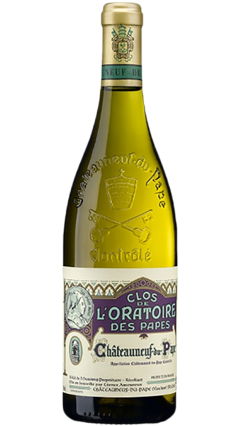
It is a blend of white berried grapes, divided into 30% of Grenache Blanc, 30% of Clairette, 30% of Roussanne and 10% of Bouboulenc. These grapes come from vineyards in different areas of the CDP region however united by the presence of limestone soils which adds distinctive minerality. This unique combination of grape varieties helps to create an extraordinarily harmonious wine, characterized by a perfect balance between body, acidity and lifted aromatics.
Vinification Notes – Once the grapes arrive in the cellar they are pressed delicately as whole clusters. This gentle ‘champagne style’ pressing technique lasts for 7 to 8 hours rather than the average 2 hours. The process involves pressing and de-compacting the grapes then pressing them again with the aim of extracting the purest juices possible.
Distinctively, vinification takes place 80% in tulip-shaped concrete vats and 20% in 300L new oak barrels. The egg-like form of these tulip vats creates a gravitational movement (known as ‘the vortex phenomenon’) which helps to keep the lees suspended naturally, without stirring, thereby developing the wine’s aromatic potential and elegant texture.
Winemaker Notes – The colour is a beautiful golden yellow with glints of green. The nose expresses the specificity of this wine, with aromas of white fruit (apple, pear), orange blossom, aniseed and lemon and woody undertones. The palate has much presence, is very fruity, with finesse, breadth and sweetness, but retaining a good balance of freshness.
Pretty pear, honeyed citrus, and subtle orchard fruits as well as a kiss of minerality and minty herbs all emerge from the 2022 Châteauneuf Du Pape Blanc, a clean, medium-bodied, vibrant white with good acidity and outstanding length. 90 points – Jeb Dunnuck
Get ready to be wowed with its balance of texture and thirst-quenching precision. L’Oratoire des Papes Blanc pairs beautifully with a wide range of dishes, from those based on fish and seafood, to chicken and white meat preparations, up to more exotic and spicy dishes. It is also a wine that can be appreciated on its own, to fully reveal its complexity and class.
Fun Fact: The wine of CDP takes its name from the relocation of the papal court from the Vatican to Avignon. The lore says that after moving in 1309, Pope Clément V ordered that vines were planted. But it was actually his successor, John XXII, who established the vineyards. The name, Châteauneuf -du-Pape, translated as “the pope’s new castle,” came into common usage by the 19th century.
The Birthplace of L’oratoire des Papes
At the gates of Châteauneuf-du-Pape, a priory serves as an unusual home to the cellars used to vinify and age the great wines of Clos de l’Oratoire des Papes. Its history dates to 1880 when Edouard Amouroux married and received an enclosed plot of vines. In 1926, his son Léonce Amouroux renamed his wine “Clos de l’Oratoire des Papes” after the Popes who built their summer palace on the hills of Châteauneuf-du-Pape in the 14th century.
Today, L’Oratoire des Papes is one of the appellation’s most emblematic wines, with a truly distinctive label. It represents the purest expression of the CDP terroir.
Vineyard management is the moment when man and nature come together in perfect symbiosis.
(Maison Ogier)
The Philosophy
With over 100 hectares of land under vine as well as a strict sourcing policy, Maison Ogier L’Oratoire des Papes is deeply rooted in CDP and the southern appellations.
In order to further strengthen and complement their assets, for over 25 years now they have enjoyed fruitful partnerships with some of the region’s most dedicated winemakers and wine domaines. They seek out the very best parcels in line with their Domaine’s ethos and vision of the Rhône Valley.
Their identity is built around the iconic southern Rhône varietal that is grenache, blended with syrah in order to achieve the subtle alchemy between purity of fruit, freshness and depth. The predominant varietal for the blended whites is grenache blanc and the style is also defined by purity, minerality and complexity.
With over 100 hectares of land under vine as well as a strict sourcing policy, Maison Ogier L’Oratoire des Papes is deeply rooted in CDP and the southern appellations.
In order to further strengthen and complement their assets, for over 25 years now they have enjoyed fruitful partnerships with some of the region’s most dedicated winemakers and wine domaines. They seek out the very best parcels in line with their Domaine’s ethos and vision of the Rhône Valley.
Their identity is built around the iconic southern Rhône varietal that is grenache, blended with syrah in order to achieve the subtle alchemy between purity of fruit, freshness and depth. The predominant varietal for the blended whites is grenache blanc and the style is also defined by purity, minerality and complexity.
Edouard Guerin, Technical Director at L’Oratoire des Papes, is committed to cultivating the vines with the utmost respect for nature and the environment. The vines are carefully preserved thanks to gentle and most importantly natural cultivation practices.
Since 2008, the vast majority of the vines have been cultivated using organic methods. In order for the vine to remain well nourished, in good health and well exposed, this precious terroir is cultivated using the most respectful cultivation practices possible.
Let’s hear from the “scourer” of the vines, the wizard of the cellars…L’Oratoire Oenologist Edouard Guérin:
“A wine is born in the soils, and it is from these soils that the vine draws its strength of character and nourishes itself from its substrata. The myriad of soils that we are blessed with here in the Rhône Valley is a true source of inspiration. We also believe that we must trust nature, watch it closely and try to understand it on a daily basis…[ ] The balance in every single vine stock is our ultimate objective.”
Their work in the cellars keeps intervention to a minimum so as not to conceal the true personality of their wines.
“We de-stem early but we keep the clusters whole whenever possible. We are an advocate of co-fermentation vinifications for the beautiful synergies it creates between the varietals. The wine gains in harmony, the aromatic integration is more delicate and balanced. We use very little new oak in the ageing process and reserve wood contact for the crus that have the strength required to stand up to the oak”.
He sees himself and the team at Maison Ogier as both farmers and amusingly, a touch as “Ingeneers” as well, explaining it thus:
“if we think about our wines then nature is always at the forefront of my mind. We adapt using the wisdom of a farmer. We use responsible methods of viticulture in all of our parcels, we reintroduce somewhat forgotten, ancient and indigenous varietals. We are also developing methods of soil preparation and maintenance without tillage in order to encourage the development of plant and animal biodiversity which contribute to optimal hydric and mineral resources in the vine.”
And in conclusion, how does he describe their Maison Ogier and L’Oratoire house style?
“Drink-a-bi-li-ty! A wine should be enjoyed for its spontaneity, with simplicity, but above all for pleasure. We have a cultural vision of wine rather than an intellectual one. Even for the finest crus…[ ] We are very cautious when it comes to extraction which we believe needs to be as delicate as possible. The wines should be encouraged to express their origins yet without any loss of balance or depth.” We’ll definitely drink to that – Salut!
A Bit of Background for new CDP converts
The name of the Châteauneuf-du-Pape appellation is closely linked to the arrival of the Popes in the region several centuries beforehand. In the early 14th century, the papal seat was in Avignon and not the Vatican as it is today.
In the wake of the phylloxera crisis in the late 19th century, the winemakers of Châteauneuf-du-Pape created the first winemaker’s syndicate in 1894 under the impetus of Baron Pierre Le Roy. This led to the creation of France’s very first AOC on the May 15th, 1936.
Châteauneuf-du-Pape is known for the remarkable diversity of its soils. The appellation counts four different terroirs originating from three distinctive geological eras: rounded stones (galets roulés), sandy soils (safres), limestone fragments and red clay sandstones.
This geological diversity provides a complex aromatic palette and great flavour richness to the wines of CDP, which are renowned worldwide for their finesse and elegance.
This Rhône valley appellation overlooks the Mont Ventoux and covers 3200 hectares of vines. Manual harvesting is now compulsory in the whole of the AOC and no less than 13 varietals are permitted in the specifications for the production of red and white wines.
Foreign demand for them is so great that about 80% of the region’s wines are exported.
In every single bottle, there’s everything we love about great CDP rouge: the hedonistic richness, the scintillating structure, the regal substance. It’s delicious and profoundly complex right now, but of course it’s also a candidate for serious long-term aging. Rarely do we come across a wine so evocative of its Rhone birthplace.
Foreign demand for them is so great that about 80% of the region’s wines are exported.
In every single bottle, there’s everything we love about great CDP rouge: the hedonistic richness, the scintillating structure, the regal substance. It’s delicious and profoundly complex right now, but of course it’s also a candidate for serious long-term aging. Rarely do we come across a wine so evocative of its Rhone birthplace.
